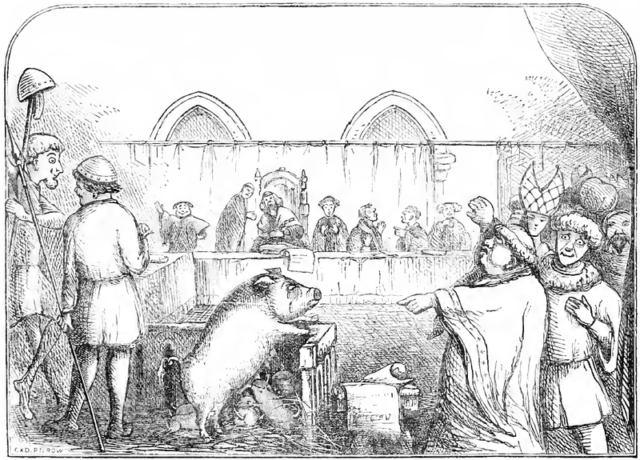As civilizations developed, so did the society and the principles of behavior and the law. The first courts existed during ancient times. Ancient Egypt had civil code books written 3000 years BC, and the law and its applications advanced ever since.
As societies evolved, courts of law were established and began to rule. The courts set a line between the right and wrong, and people that crossed that line were prosecuted and punished according to the law. But people were not the only beings that were pursued and punished by the law. In the middle ages, there were cases of animals being trialed for the crimes they committed, and these trials were not a showcase. A judge, prosecutors, witnesses, a defense attorney- they were all present and had a role in the animal trials.

This tradition lasted for five centuries. Since the law prohibited punishment without trial, everyone and everything could be taken to court. From the 13th to the 18th century, many animals have seen the courtroom, and many of these cases were officially recorded. The first record of this kind was the prosecution of a pig in France, in 1266. This pig was accused of eating a child, found guilty and executed.
The judges paid attention to the animals’ behavior in court as well. If the animals were not behaving themselves or were loud, this was used against them. Wild animals were not a subject of trials. Only domestic animals were prosecuted, as they were living among humans and it was considered they should have learned how to behave. In some cases of bestiality between humans and animals, the animals were absolved of blame, and the people were sentenced to death, as it was considered that the animal was raped and it had no intentions of having an affair with the human.
Animals were being prosecuted by both the church and state courts. In some of the cases, when the trial was being held in a church court, the punishment was the animal’s excommunication from the church, or it was cursed.
This punishment was mainly used against small animals like bugs and rodents, guilty of destroying crops. Larger animals were often accused of more serious crimes, like murder and were therefore executed or exiled.

Non-dependable of the court type, the animals had defendants who represented them before the judge and the prosecutors. Human witnesses were also a very common sight on the animal trials, as animals had the same rights as humans.
Some cases were pretty ridiculous, like the one when a rooster was blamed for the unnatural crime of laying an egg. The rooster was executed because the people were afraid that Satan itself possessed it.
